Travelers 2006 Annual Report Download - page 55
Download and view the complete annual report
Please find page 55 of the 2006 Travelers annual report below. You can navigate through the pages in the report by either clicking on the pages listed below, or by using the keyword search tool below to find specific information within the annual report.-
 1
1 -
 2
2 -
 3
3 -
 4
4 -
 5
5 -
 6
6 -
 7
7 -
 8
8 -
 9
9 -
 10
10 -
 11
11 -
 12
12 -
 13
13 -
 14
14 -
 15
15 -
 16
16 -
 17
17 -
 18
18 -
 19
19 -
 20
20 -
 21
21 -
 22
22 -
 23
23 -
 24
24 -
 25
25 -
 26
26 -
 27
27 -
 28
28 -
 29
29 -
 30
30 -
 31
31 -
 32
32 -
 33
33 -
 34
34 -
 35
35 -
 36
36 -
 37
37 -
 38
38 -
 39
39 -
 40
40 -
 41
41 -
 42
42 -
 43
43 -
 44
44 -
 45
45 -
 46
46 -
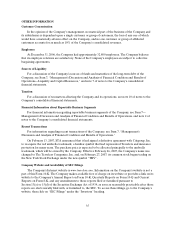 47
47 -
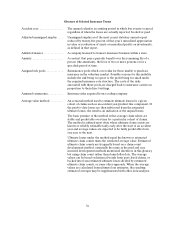 48
48 -
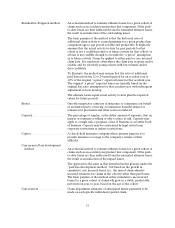 49
49 -
 50
50 -
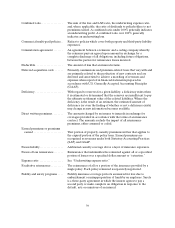 51
51 -
 52
52 -
 53
53 -
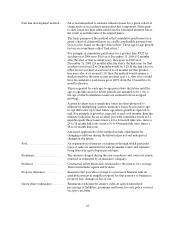 54
54 -
 55
55 -
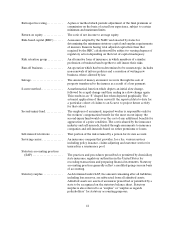 56
56 -
 57
57 -
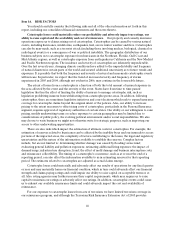 58
58 -
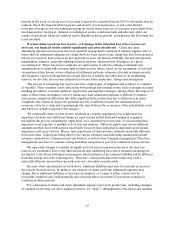 59
59 -
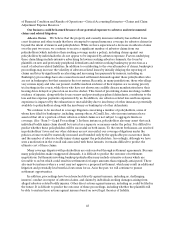 60
60 -
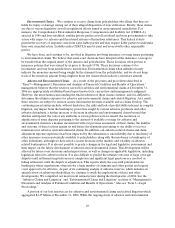 61
61 -
 62
62 -
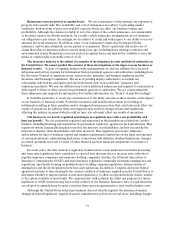 63
63 -
 64
64 -
 65
65 -
 66
66 -
 67
67 -
 68
68 -
 69
69 -
 70
70 -
 71
71 -
 72
72 -
 73
73 -
 74
74 -
 75
75 -
 76
76 -
 77
77 -
 78
78 -
 79
79 -
 80
80 -
 81
81 -
 82
82 -
 83
83 -
 84
84 -
 85
85 -
 86
86 -
 87
87 -
 88
88 -
 89
89 -
 90
90 -
 91
91 -
 92
92 -
 93
93 -
 94
94 -
 95
95 -
 96
96 -
 97
97 -
 98
98 -
 99
99 -
 100
100 -
 101
101 -
 102
102 -
 103
103 -
 104
104 -
 105
105 -
 106
106 -
 107
107 -
 108
108 -
 109
109 -
 110
110 -
 111
111 -
 112
112 -
 113
113 -
 114
114 -
 115
115 -
 116
116 -
 117
117 -
 118
118 -
 119
119 -
 120
120 -
 121
121 -
 122
122 -
 123
123 -
 124
124 -
 125
125 -
 126
126 -
 127
127 -
 128
128 -
 129
129 -
 130
130 -
 131
131 -
 132
132 -
 133
133 -
 134
134 -
 135
135 -
 136
136 -
 137
137 -
 138
138 -
 139
139 -
 140
140 -
 141
141 -
 142
142 -
 143
143 -
 144
144 -
 145
145 -
 146
146 -
 147
147 -
 148
148 -
 149
149 -
 150
150 -
 151
151 -
 152
152 -
 153
153 -
 154
154 -
 155
155 -
 156
156 -
 157
157 -
 158
158 -
 159
159 -
 160
160 -
 161
161 -
 162
162 -
 163
163 -
 164
164 -
 165
165 -
 166
166 -
 167
167 -
 168
168 -
 169
169 -
 170
170 -
 171
171 -
 172
172 -
 173
173 -
 174
174 -
 175
175 -
 176
176 -
 177
177 -
 178
178 -
 179
179 -
 180
180 -
 181
181 -
 182
182 -
 183
183 -
 184
184 -
 185
185 -
 186
186 -
 187
187 -
 188
188 -
 189
189 -
 190
190 -
 191
191 -
 192
192 -
 193
193 -
 194
194 -
 195
195 -
 196
196 -
 197
197 -
 198
198 -
 199
199 -
 200
200 -
 201
201 -
 202
202 -
 203
203 -
 204
204 -
 205
205 -
 206
206 -
 207
207 -
 208
208 -
 209
209 -
 210
210 -
 211
211 -
 212
212 -
 213
213 -
 214
214 -
 215
215 -
 216
216 -
 217
217 -
 218
218 -
 219
219 -
 220
220 -
 221
221 -
 222
222 -
 223
223 -
 224
224 -
 225
225 -
 226
226 -
 227
227 -
 228
228 -
 229
229 -
 230
230 -
 231
231 -
 232
232 -
 233
233 -
 234
234 -
 235
235 -
 236
236 -
 237
237 -
 238
238 -
 239
239 -
 240
240 -
 241
241 -
 242
242 -
 243
243 -
 244
244 -
 245
245 -
 246
246 -
 247
247 -
 248
248 -
 249
249 -
 250
250 -
 251
251 -
 252
252 -
 253
253 -
 254
254 -
 255
255 -
 256
256 -
 257
257 -
 258
258 -
 259
259 -
 260
260 -
 261
261 -
 262
262 -
 263
263 -
 264
264 -
 265
265 -
 266
266 -
 267
267 -
 268
268 -
 269
269 -
 270
270 -
 271
271 -
 272
272 -
 273
273 -
 274
274 -
 275
275 -
 276
276 -
 277
277 -
 278
278 -
 279
279 -
 280
280 -
 281
281 -
 282
282 -
 283
283 -
 284
284 -
 285
285
 |
 |
43
Rates. ........................ Amounts charged per unit of insurance.
Redundancy .................. With regard to reserves for a given liability, a redundancy exists when
it is estimated or determined that the reserves are greater than what
will be needed to pay the ultimate settlement value of the related
liabilities. Where the redundancy is the result of an estimate, the
estimated amount of redundancy (or even the finding of whether or
not a redundancy exists) may change as new information becomes
available.
Reinstatement premiums .......Additional premiums payable to reinsurers to restore coverage limits
that have been exhausted as a resultof reinsured losses under certain
excess of loss reinsurance treaties.
Reinsurance. .................. The practice whereby one insurer, called the reinsurer, in
consideration of a premium paid tothat insurer, agrees to indemnify
another insurer, called the ceding company, for part or all of the
liability of the ceding company under one or more policies or
contracts of insurance which it has issued.
Reinsurance agreement......... A contract specifying the terms of a reinsurance transaction.
Reported claim development
method..................... An actuarial method to estimate ultimate claim counts for a given
cohort of claims such as an accident year/product line component. If
the reported-to-date counts are then subtracted from the estimated
ultimate counts, the result is an indication of the IBNR counts.
The approach is the same as that described in this glossary under the
“paid loss development method”, but based on the growth in
cumulative claim counts rather than paid losses. The basic premise of
the method is that cumulative claim counts for a given cohort of
claims will grow in a stable, predictable pattern from year-to-year,
based on the age of the cohort.
Residual market (involuntary
business)................... Insurance market which provides coverage for risks for those unable
to purchase insurance in the voluntary market. Possible reasons for
this inability include the risk being too great or the profit potential
too small under the required insurance rate structure. Residual
markets are frequently created by state legislation either because of
lack of available coverage such as: property coverage in a windstorm
prone area or protection of the accident victim as in the case of
workers’ compensation. The costs of the residual market are usually
charged back to the direct insurance carriers in proportion to the
carriers’ voluntary market shares for the type of coverage involved.
Retention. .................... The amount of exposure a policyholder company retains on any one
risk or groupof risks. The term may apply toan insurance policy,
where thepolicyholder is an individual, family or business, or a
reinsurancepolicy, where the policyholder is an insurance company.
Retention ratio................ Currentperiod renewal premiums, accounts orpolicies as a
percentage of total premiums, accounts or policies available for
renewal.
Retrospective premiums ........ Premiums related to retrospectively rated policies.
